Fun lesson plan for ESL teachers
This blog post contains an hour-long lesson plan for teaching the present perfect with games, along with my skit Ready Steady Go.
The skit is in this collection of role-plays for children.
Target Language
Present perfect: I’ve forgotten my
If you prefer, use this lesson plan for the past simple and teach “I forgot” instead.
Nouns: bag, jacket, sunglasses, hat, gloves, keys. Feel free to adapt these nouns according to your syllabus or requirements.
Phrases: Are you ready? Are you sure? Yes, I’m sure.
Teaching the present perfect vocabulary games
Listening Games
Introduce the key nouns using flashcards or objects. Then, play the listening game Jump the Line, where kids jump back and forth depending on which side of the line the flashcard (or item) is that you name. Click the link for a full description of Jump the Line for one pupil, but it’s the same for a group or class.
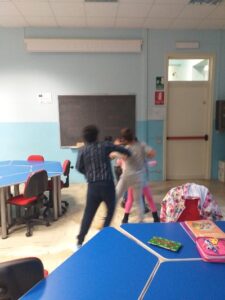
Listening game 2
Then you could play Rapid Reaction, where kids race to slap their hands down on the flashcard you name. If you can’t get all your kids around the pictures in a group, make four lines in front of the board. For example, say “touch a bag,” and the four kids at the front race to touch the bag flashcard and then go to the back of the line. There’s no need to score points, but if your kids love competitive team games, then you could keep score. For example, award a point to whichever team is fastest each time. I don’t bother point scoring with this game as it can be pretty hard to tell who was first unless you use fly swatters, then you can see which one is underneath!
Listening game 3
Depending on the age and ability of your pupils, the above two games may be enough. If you need more, continue with Find Me before I count to five. First, spread little flashcards around class, using several copies of each. Next, say, “Find me some sunglasses! 1,2,3,4…5.” Check my Preschool Games book or Primary School Games book for more.
Games books to teach grammar and vocabulary
-
Games
ESL Games book for primary & middle school children
Rated 5.00 out of 5€19.97Original price was: €19.97.€15.33Current price is: €15.33. Add to cart -
Games
Preschool games book
Rated 0 out of 5€19.97Original price was: €19.97.€11.97Current price is: €11.97. Add to cart
Speaking games for the present perfect
Which one has gone?
Place the vocabulary flashcards face up with the kids around you. With a big class, use the board. Ask kids to close their eyes or hide their faces. Remove one (or two) flashcards and ask which one has gone. Kids open their eyes and tell you which picture you removed. If the same kid answers every time, have them remove the images. Start with just a few pictures and add more, or duplicates, to make it harder as the game goes along.Teaching present perfect phrases from the skit
Teaching the present perfect “I’ve forgotten my sunglasses.”
Demonstrate the concept by laying out some sunglasses, a bag, and other items. Wave goodbye to the class and head towards the door. As you are leaving, stop suddenly and say, “Oh no! I’ve forgotten my sunglasses.” Go back to the items, pick up the sunglasses and leave again. When you reach the door, stop and say, “Oh no! I’ve forgotten my bag.” Return for the bag. Continue until the kids have the idea. Of course, if you speak L1, you can translate the phrase to the kids as well.
Board Bash
Practise the phrase “I’ve forgotten my” with a game, like Board Bash. In pairs, kids choose an item, say “I’ve forgotten my bag,” and aim at the bag flashcard with a rolled-up pair of socks or another suitable missile. Make small groups for this if you have a big class. You don’t want kids sitting around waiting a long time for a turn because it is boring for them.
Relay Race for present perfect
Relay Race is a good speaking game for drilling sentences like, “I’ve forgotten my keys” while passing down the flashcard of keys or real keys. Click here for a full description of Relay Race.
Teaching other phrases from the skit

Demonstrate the idea of being ready via a runner ready to start a race. For instance, take a ball, then, ask a student, “Are you ready?” They say, “yes,” and you throw the ball. Use a dictionary if necessary to translate “ready.”
Teach the concept of “Are you ready?”
Have the class ask you in unison, “Are you ready?” Look ready and then say, “No! I’ve forgotten my bag.” And pick up your bag. Repeat through the items.
Play a game in pairs to practise “Are you ready?” Demonstrate this with one of the best students first, who is likely to understand quickly. Place one hand out in front of you. Your student places a hand on top of yours. You ask, “Are you ready?” The student says, “Yes.” Next, you wait and then suddenly try to tap the top of your student’s hand. They have to move their hand out of the way. Obviously, you will hit the student’s hand the first time, since they don’t know what to expect. So repeat until the demo is clear for everyone. Now put students in pairs and have them play. The person doing the tapping has to ask, “Are you ready?” each time.
Writing
At this point, students could copy all the vocabulary and key phrases into their notebooks because some students need to see things written to memorize them. There are plenty of writing games in my Primary school games book (but none in the preschool games book).
Click here for an example game, Writing Race.
Put the skit together
Now it’s time to start putting the skit together.
The first time through, you play the driver and while students are passengers. If you have a student who is way ahead of the others, make them the driver the second time. Talented students need to be stimulated, or they get bored.
It may be that after two or three times through the skit, your class will be able to perform it perfectly, bar the odd student, inevitably there are one or two who don’t learn well, and you can’t wait for them to get it because if you do, the entire rest of the class will be tearing their hair out. It’s just the way of things in a classroom. So give the slower ones extra help if you can, outside of class time. If you can, make an audio version available online for students to listen to at home. If you purchase my skits book, you also receive some videos. I don’t have a video for every skit yet, but the collection is building. Kids could have access to these to help them learn outside of class time.
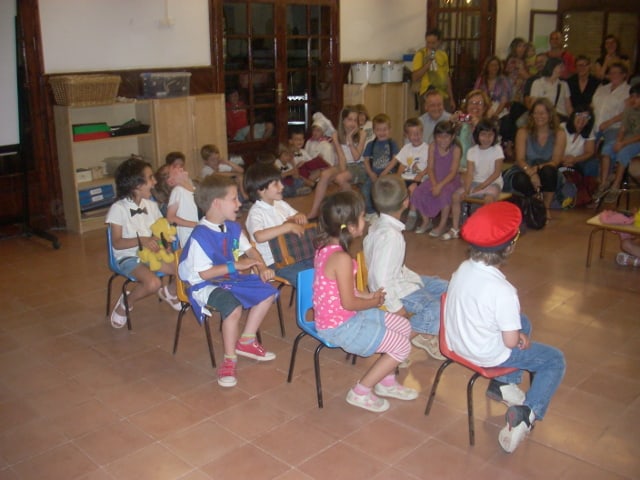
How long will it take to prepare the skit?
It may be that you take several lessons to put this skit together. Again, it depends on the age and ability of your pupils. I generally spend an entire lesson teaching key words and phrases, as described above. After that, I continue to rehearse the skit at each lesson for 5-15 minutes (again, depending on the level of students). Then, I do something completely different for the rest of the time, which prevents the skit from becoming stale through overexposure. When the skit is ready, be sure to perform it to another class, the school at assembly, or parents. Alternatively, at the very least, have another teacher come in to watch. If possible, video the skit and play it back to the kids.
My experience with this lesson
I used this lesson in Nepal with 9-year-olds, and it was a resounding success. The kids were super enthusiastic and delighted to be using English in context rather than just yelling phrases out of their book at the teacher. One of the permanent English teachers came in to watch, and the kids were thrilled to perform to him. The next day all the kids were begging me to give them another lesson. My Nepalese kids were quick learners, so we put this together in one session.
The best student made a confident driver, but the two weakest students could not manage their sentence, “I’ve forgotten my” alone, so the other pupils helped them. In contrast to these fast learners, when I taught 5-year-old beginners this skit, we spent an entire hour on drill games and then rehearsed it for 10 minutes over at least six lessons. They were then able to perform it fluently to parents at the end-of-term show.
The younger or slower your learners, the more language games you need at the outset to drill the vocabulary and key phrases. In case of need, other games on my lesson plan were: All Change, Run and Fetch, Clapping Games, or use any games from my games books.
Success
Check out teachers’ success using these skits and see some cute pictures of them in action.
Free skit for teaching the present perfect
You may download the skit Ready Steady Go on the link below. Use it for teaching the present perfect, or, if you prefer, the past simple.
https://teachingenglishgames.com/wp-content/uploads/2021/06/Free_ESL_Play.pdf
Relevant resources
-
ESL Tutoring
Fun ESL Role-plays and Skits for Children
Rated 0 out of 5€19.97Original price was: €19.97.€15.33Current price is: €15.33. Add to cart
Skits book
Enjoy my 30 skits for kids with this book in instant download. (You can get it as a paperback from Amazon or your local bookstore, but the PDF version is handy for printing a skit should you want to.)
Games book
All these games are in my book of grammar games ESL Games: 176 English Language Games for Children. Available in instant PDF download, Kindle, and paperback.
-
ESL Tutoring
Plays and Skits for Teens
Rated 5.00 out of 5€19.97Original price was: €19.97.€15.33Current price is: €15.33. Add to cart -
ESL Tutoring
Fun ESL Role-plays and Skits for Children
Rated 0 out of 5€19.97Original price was: €19.97.€15.33Current price is: €15.33. Add to cart
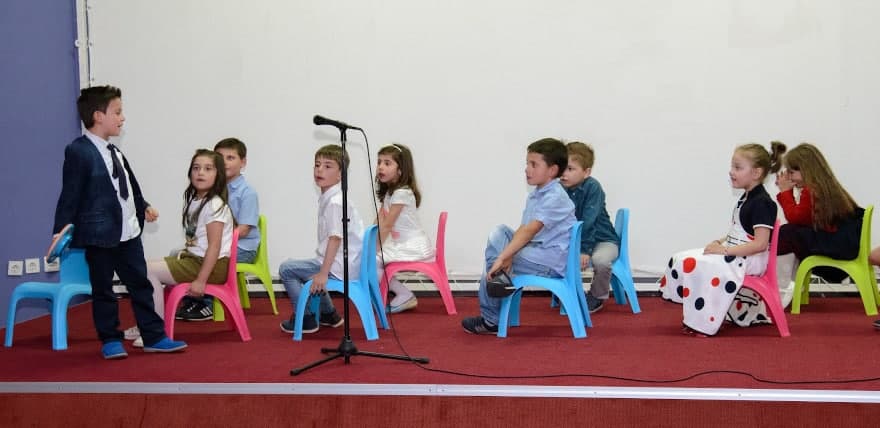
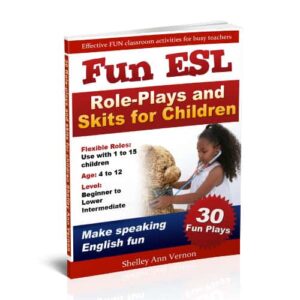
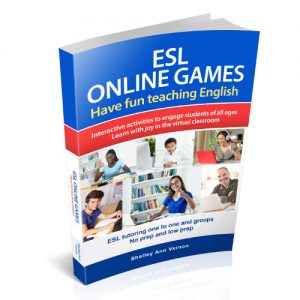
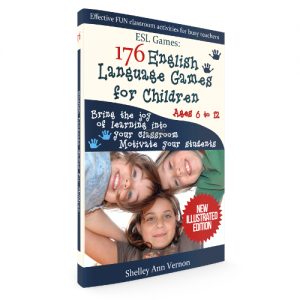
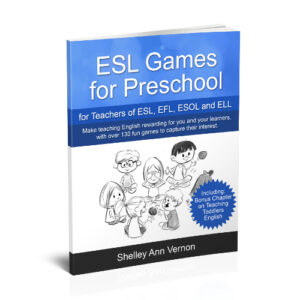
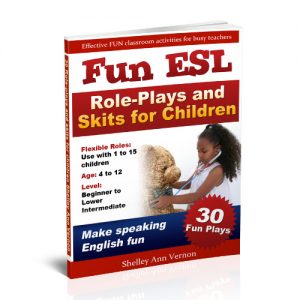
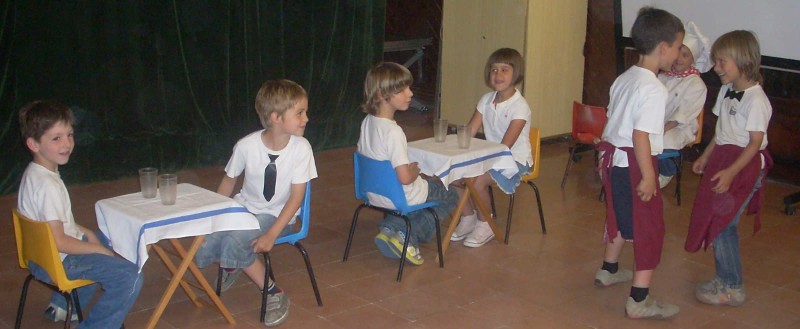
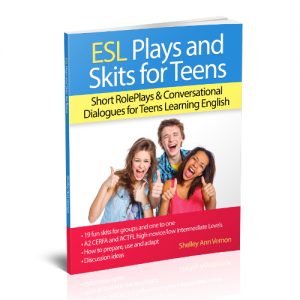
1 thought on “Teaching the present perfect to kids”
Could you just send me a sample of any of the plays, just to see if they are sitable for my students? Thanks